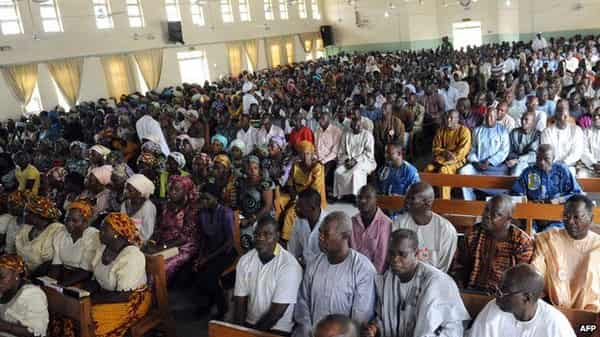Continued from yesterday
WHEN the chamber enquired into the question of whether the Tutsi constituted a stable and permanent group for purposes of the Genocide Convention, it fortuitously found that the Tutsi constituted a group referred to as “ethnic” in official Rwandan classifications. Identity cards carried by Rwandans at the time of the events included a reference to “ubwoko” in Kinyarwanda or “ethnie” ”ethnic group) which, depending on the case referred to the designation Hutu, Tutsi, or Twa.
In addition to this crucial finding, the chamber also noted that all the Rwandan witnesses who appeared before it invariably answered without hesitation the prosecutor’s questions regarding their ethnic identity. It therefore, concluded that at the time of the alleged events, “the Tutsi did indeed constitute a stable and permanent group and were identified as such by all”. They were consequently protected by the Genocide Convention and Article 2 of the Statute.
By expanding the categories of protected groups under the Genocide Convention to include, “stable and permanent group, whose membership is largely determined by birth”, the chamber did not only provide a leeway for Judges in future cases to overcome the problem of definition in the Statute, it established as a precedent the principle that the court may regard any group falling into the new category as an ethnic group for purposes of the Genocide Convention, in so far, as members of the society in question perceive that group to be distinct from other groups according to local, subjective criteria. ii)
The requirement of Dolus Specialis intent to destroy the group
The jurisprudence of the tribunal correctly recognises the mental element of genocide in Article 2(2) of the Statute as its distinguishing feature, namely the requirement of dolus specialis or specific intent to destroy in whole or in part, a national, ethnical, racial or religious group, as such. This mental element applies to all material acts of genocide enumerated under Article 2(a)- (e) of the Statute. With regard to the crime of genocide the offender is culpable only when he has committed one of the offences charged under Article 2(2) of the statute, accompanied by the specific intent to commit genocide.
Since the underlying crimes, such as killing or causing serious bodily or mental harm, are not international crimes as such, it is this specific intent that distinguishes the crime of genocide from the ordinary crime of murder.
Thus, in addition to defining genocide, the requisite mental element also delineates the normative sphere of international law from that of national law. The term dolus specialis refers to the degree rather than scope of intent. By way of comparison, dolus generalis requires that the perpetrator ‘means to cause’ a certain consequence ‘or is aware that it will occur in the ordinary course of events’, whereas special intent requires that the perpetrator ‘clearly intended the result’ signifying a psychological nexus between the physical result and the mental state of the perpetrator. With regard to determining the offender’s specific intent, the trial chambers of the ICTR adopted the reasoning in Akayesu.
Accordingly, in Prosecutor v. Musema, the trial chamber approvingly quoted the “presumptions of fact“ formulation proposed in Akayesu: “[….] intent is a mental factor which is difficult, even impossible to determine. This is the reason why in the absence of a confession from the accused, his intent can be inferred from a certain number of presumptions of fact.
The Chamber considers that it is possible to deduce the genocidal intent inherent in a particular act charged from the general context of the perpetration of other culpable acts systematically directed against the same group, whether these acts were committed by the same offender or by others. Other factors such as the scale of atrocities committed, their general nature, in a region or a country, or furthermore, the fact of deliberately and systematically targeting victims on account of their membership of a particular group, while excluding the members of other groups, can enable the Chamber to infer the genocidal intent of a particular act.”
Following the reasoning in Akayesu, the trial chamber in, Prosecutor v. Rutaganda decided that, in practice, intent can be on a case by case basis inferred from the material evidence submitted to the Chamber including the evidence which demonstrates a consistent pattern of conduct by the accused.
Similarly, the Trial Chambers of the ICTY made pronouncements supportive of the ICTR approach. In Prosecutor v Krstic. it was held that even though the Genocide Convention does not recognise cultural genocide as a criminal act falling within its scope, proof of attack directed against cultural monuments or institutions, committed in association with killing may be relied upon to infer genocidal rather than a homicidal intent. The ICTY further recognised that the nature of some means employed to achieve “ethnic cleansing” was indicative of an effort to strike at a group’s very foundations.
For example, the systematic rape of women was in some instances intended to impose a new ethnic identity on the child, and the destruction of mosques or Catholic churches was aimed at erasing a community’s centuries-long presence The motive of the offender or the efficiency of the method used will not preclude a finding of genocidal intent provided the intent is clear. The offence of genocide does not require proof that the perpetrator chose the most efficient method to accomplish his objective of destroying the targeted part.
Even where the method selected will not implement the perpetrator’s intent to the fullest, leaving that destruction incomplete. The motive of the accused is equally irrelevant: provided there is proof of specific intent, the accused can be held liable for the commission of genocide.
iii) Destruction of the group
To conclusively resolve the issue of genocidal intent of the accused, [s]he must intend “to destroy” a protected group. This is because customary international law limits the definition of genocide to those acts seeking the physical or biological destruction of all or part of the group.
The Trial Chamber in Akayesu interpreted “as such” to mean that the act must be committed against an individual because the individual was a member of a specific group and specifically because he belonged to this group, so that the victim is the group itself, not merely the individual. The words “as such” serve to reconcile the two diverging approaches for and against a motivational component as an additional element.
The ICTR Appeals Chamber in Prosecutor v. Niyitegeka further clarified the relevance of the words “as such” in the context of genocidal intent matter when it held: “The term ‘as such’ has the effect of drawing a clear distinction between mass murder and crimes in which the perpetrator targets a specific group because of its nationality, race, ethnicity or religion.
In other words, the term ‘as such’ clarifies the specific intent requirement. It does not prohibit a conviction for genocide in a case in which the perpetrator was also driven by other motivations that are legally irrelevant in this context. Thus the Trial Chamber was correct in interpreting ‘as such’ to mean that the proscribed acts were committed against the victim because of their membership in the protected group, but not solely because of such membership” iv) In whole or in part.
To be continued tomorrow.
Jegede is a lawyer and former United Nations Prosecutor.
By






